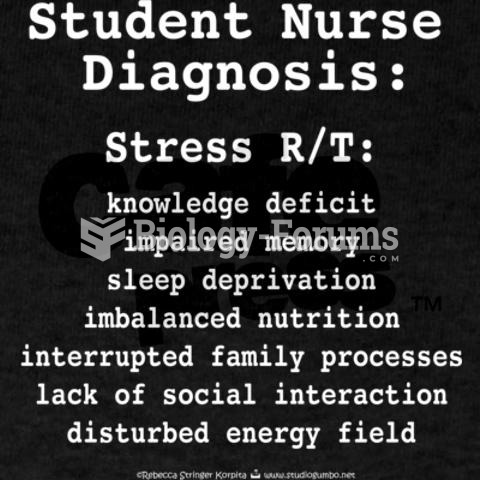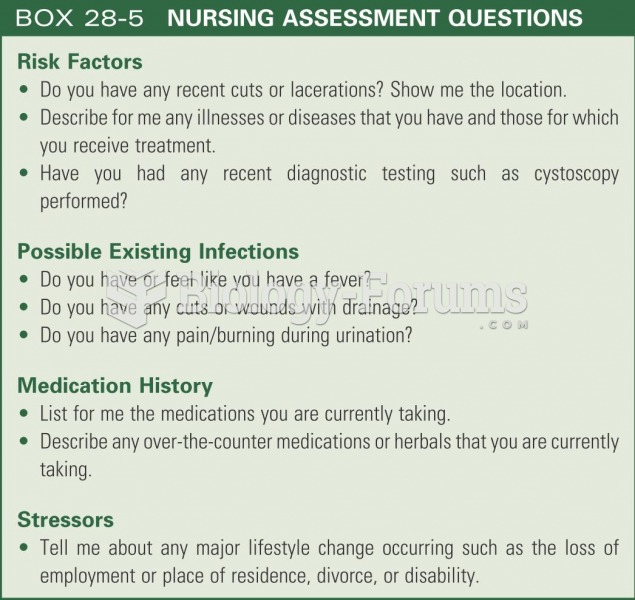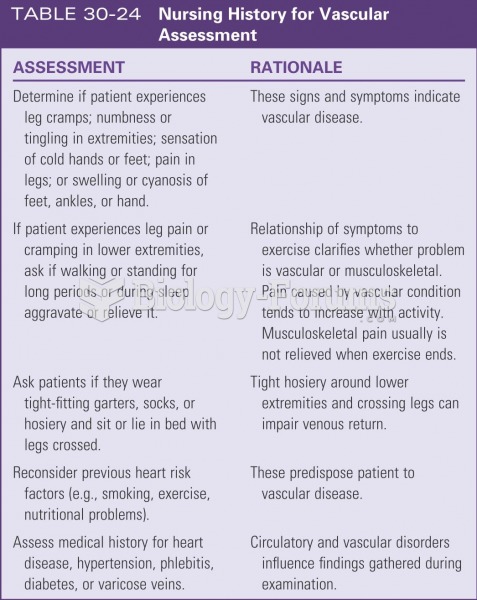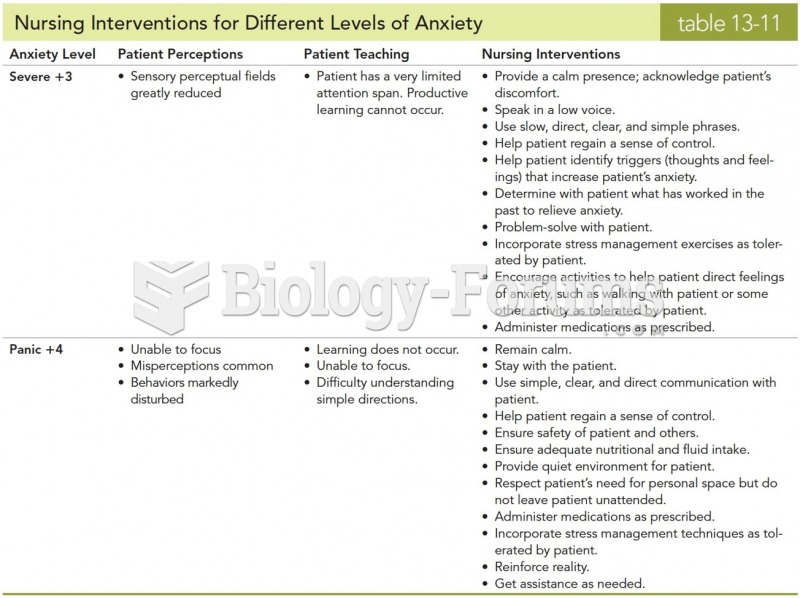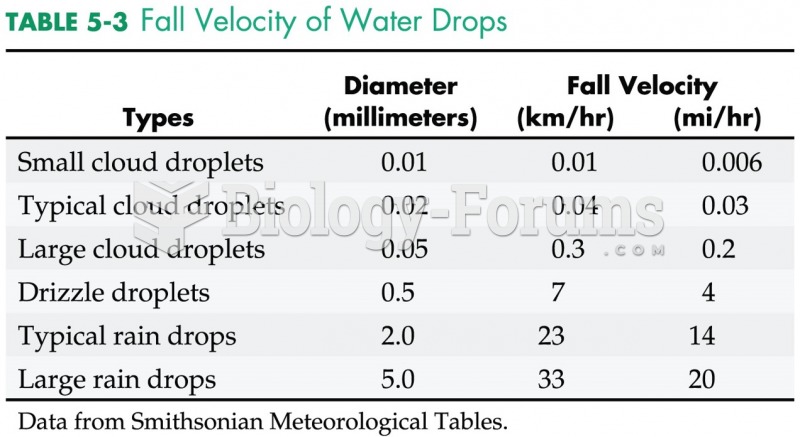This topic contains a solution. Click here to go to the answer
|
|
|
Did you know?
Disorders that may affect pharmacodynamics include genetic mutations, malnutrition, thyrotoxicosis, myasthenia gravis, Parkinson's disease, and certain forms of insulin-resistant diabetes mellitus.
Did you know?
The Centers for Disease Control and Prevention (CDC) was originally known as the Communicable Disease Center, which was formed to fight malaria. It was originally headquartered in Atlanta, Georgia, since the Southern states faced the worst threat from malaria.
Did you know?
In 1864, the first barbiturate (barbituric acid) was synthesized.
Did you know?
There are approximately 3 million unintended pregnancies in the United States each year.
Did you know?
Human stomach acid is strong enough to dissolve small pieces of metal such as razor blades or staples.



